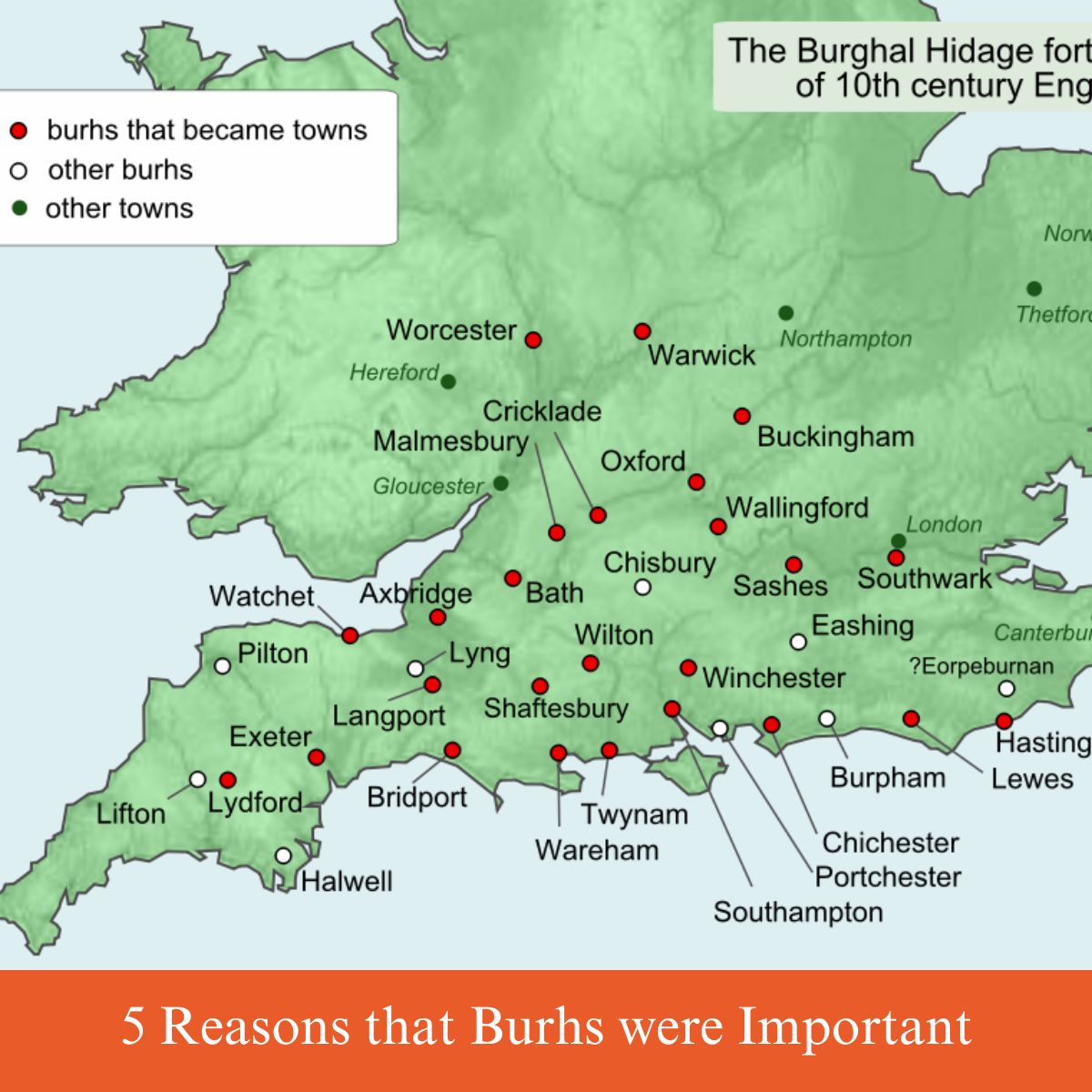What many may not know is that England was once part of the Roman Empire. Rome had created many forts and roads throughout the land.

After Rome fell, the entire landscape of Europe changed, and many of the former territories became separate nations. England was inhabited by the Anglo-Saxons and was in constant battle with each other and Vikings.
Jump to:
Civil wars began to subside with the rise of the House of Wessex, which began with King Egbert and continued during King Aethelwulf and Alfred the Great and climaxed with King Edward the Elder.
Throughout this period, the Anglo-Saxons did feud with each other, but as the throne strengthened, the people unified under it and began to turn their attention to the threat of Vikings.
Alfred the Great stabilized his kingdom from within and abroad with the use of burhs, which eventually became the word for burg.
These towns were fortified and connected with roads and changed the landscape of ancient England.
Here are 5 reasons how the burhs changed England and brought their country into the Medieval World.
1. It Stopped the Viking Threat
While Alfred the Great did not eliminate the Vikings, under his reign, he was able to drive them out of his kingdom, and his use of burhs protected the people from Viking attacks.
His use of burhs and the roads allowed him to stay proactive against the Vikings, which proved to be effective.
2. It Strengthened The Economy
The use of burhs and how King Alfred implemented them (no farm was allowed to be more than 20 miles away from the burhs) also protected farms and other assets from the attack of the Vikings.
His advanced network also sped travel, made it safer for trade, and improved the overall economy.
3. It Strengthened Anglo-Saxon Military Strength
Well-maintained roads help for quicker travel.
In order for an economy to improve, it must be well-defended. This network of burhs allowed Alfred to respond more quickly to foreign threats
The purpose of the burhs was primarily to provide defense for a port or town and the surrounding farms, villages, and hamlets.
Alfred constructed a series of burhs, listed in the Burghal Hidage, numbering over 30. Apparently, it was Alfred's intention that no English farm or village be any more than 20 miles away from a burh.
He built a network of well-maintained army roads that interconnected the burhs, allowing the population quick access to shelter.
The roads enabled Alfred's troops to move swiftly to engage the enemy. It also meant that reinforcements could be called up easily from other burhs if needed.
It is believed that each burh would have had a mounted force that would be ready for action against the Vikings
4. It Encouraged Local Responsibility for Their Town
Each local burh had a section that was maintained by a man in the town. They did this in exchange for protection.
This allowed them to have a safe haven when there were attackers. This would encourage them to have farm trade, and it would strengthen the economy.
It also gave each man a sense of independence since they were responsible for the well-being of their town.
5. Ended the Vikings plans to Invade Wessex
This builds on the very first point, but it deserves its own separate section.
The Vikings were always a threat to any coastal town around England and Western Europe. However, they had become a serious threat to invade the Kingdom of Wessex.
Through the work of King Alfred and his sister, the Burhs made it impossible for them to invade as the logistics would be too difficult due to the defenses being so strong.
The burhs were predecessors of Medieval castles and the feudal system that would dominate the Medieval landscape.
